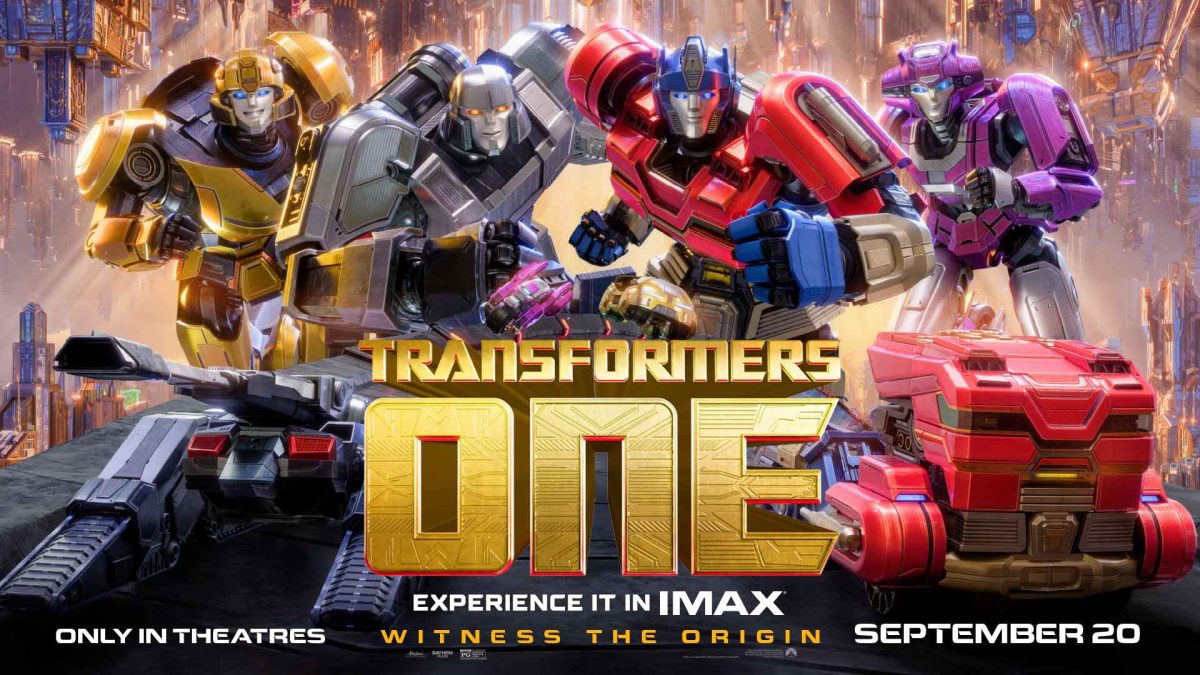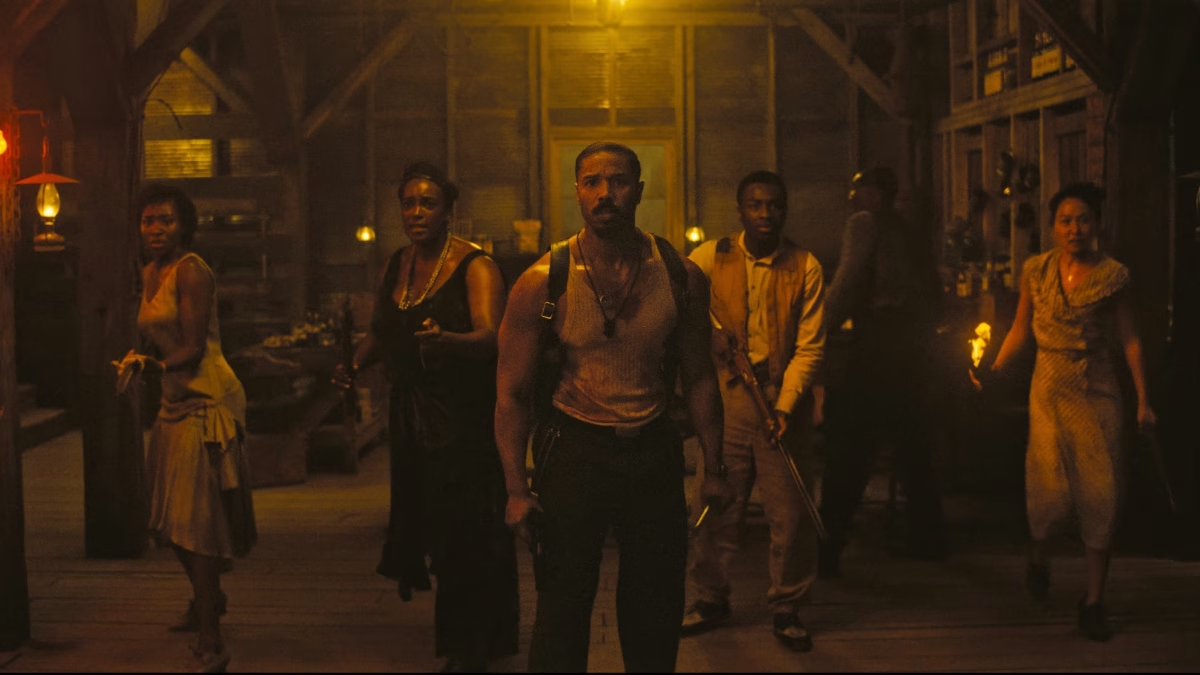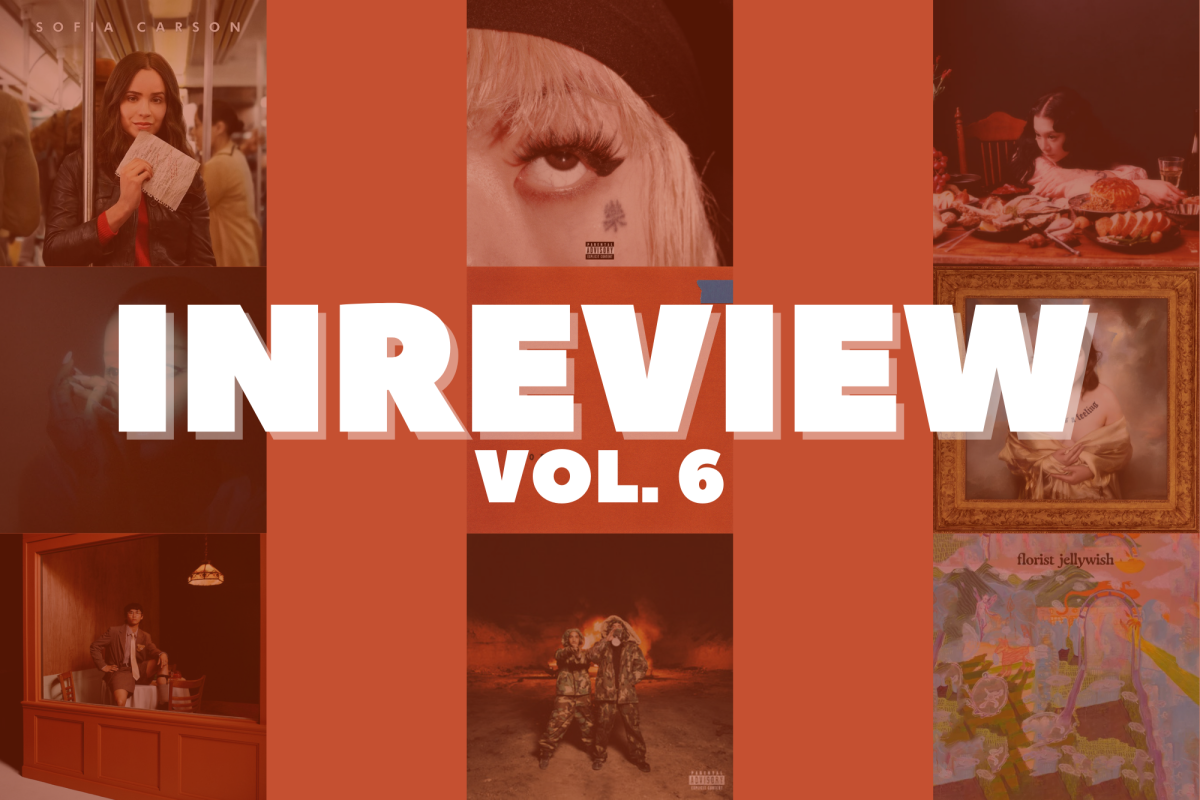Light spoilers for “Transformers One” ahead
Delivering the origin story for the long-standing feud between Optimus Prime and his nemesis Megatron, the animated film “Transformers One” was released on Sept. 5. Directed by John Cooley, the movie tells the story of a miner bot named Orion Pax and his journey in uncovering the truth about his planet, Primus. While the film touched on many aspects of life and individuality, establishing itself as a worthy prequel, it lacks many of the qualities of a good movie with lazy pacing and a cheap exposition.
The film’s narrative is centered around Pax’s relationship with his best friend D-16, particularly their push-and-pull dynamic that typically involves a reckless idea from Pax and a reluctant approval from D-16. As the film progresses and their friendship grows strained, the audience watches as D-16 begins to resent his best friend, culminating in a dramatic moment where D-16 says to Pax: “I’m done saving you.” This slowly unraveling friendship is what makes the movie so painful — despite how often platonic relationships deteriorate in real life, it’s a subject that mainstream media rarely portrays, making “Transformers One” all the more relatable.
Every character in the movie is surprisingly complex, with distinct backgrounds and identities. One of the characters, Elita, has been a rule follower all her life, but she is suddenly fired from the only job she’s ever known. Another character named Bumblebee has lived away from society for as long as he can remember, and D-16 and Pax both see the world in completely different ways. Although the film showcases diverse personalities, the chemistry between the characters is easy and conversational, portraying the lighthearted, witty banter and playful interactions of close friends.

However, the movie’s pacing is awkward, even occasionally coming across as lazy. Shoddy exposition in the beginning leaves the audience struggling to understand the context of the narrative, and the predictable story in the first half of the movie leads to a disappointing climax. Moments that are crucial to the plot are rushed, and parts that aren’t as relevant are longer than they should be. For example, in the film, it is a known fact that nobody has been on the surface of their planet except for the higher class, known as the protectors. And yet, their journey to the surface takes mere minutes, with no challenges whatsoever.
While its plot isn’t necessarily groundbreaking, “Transformers One’s” story still manages to tug on the audience’s heartstrings in a way action movies rarely accomplish. Each character’s carefully mapped-out story arc shines through, and the focus on details within each character helps humanize them to the audience.
The attention to detail in the film is something noticed throughout the animation. Although it is the franchise’s first full CG-animated film, the movie’s animation is quick and specific, capturing viewers straight into the scene. Precise animation is seen best in a fight between two transformers, Alpha Trion and Sentinel Prime. When transforming, the distinctness of every gear shifting into place sounds and looks realistic. The animators perfectly capture the way a machine works while simultaneously making the characters’ motions seem human. When the two hit each other, the impacts are as realistic as metal hitting metal, and when Sentinel lands on the ground the specks of dust settling in his wake are clear and elaborate.

The efforts to humanize the robots as much as possible is furthered by humor incorporated into the script. Laugh-out-loud comedy is peppered throughout the film, making the experience immersive and enjoyable. Each character gets a chance to take part in witty banter and unique wordplay, no matter what kind of role they have.
Ultimately, what really makes “Transformers One” different from other movies of its genre is the fact that D-16 is not reduced to a “best friend character.” While Pax wins their fight and the loyalty of their planet, D-16 also wins in his own way. By accomplishing his goals on his own, D-16 has finally forged a path by himself, and for the first time, he doesn’t need Pax to tell him what to do next. D-16’s formation of his own identity helps with his morally gray character arc. While his motivations started out good, the outcomes came at the expense of others, leaving his growth as something that can be interpreted as either a win or a loss.
“Transformers One,” a movie marketed as a cliche hero-saves-the-day film, unexpectedly proves to be a heartbreaking story on friendship, loyalty and betrayal. Touching on the closer aspects of the relationship between D-16 and Pax lets the audience see how intertwined their lives are, just for their friendship to be torn apart in the end, with no chance of revival.
When Pax exiles D-16 at the end, the film closes with a flashback to their first meeting, where they agree to support and take care of each other “forever.” The feeling of losing a friend you thought would never leave is one that captures the audience near the end, leaving them in disbelief while the credits roll.
3.5/5


















